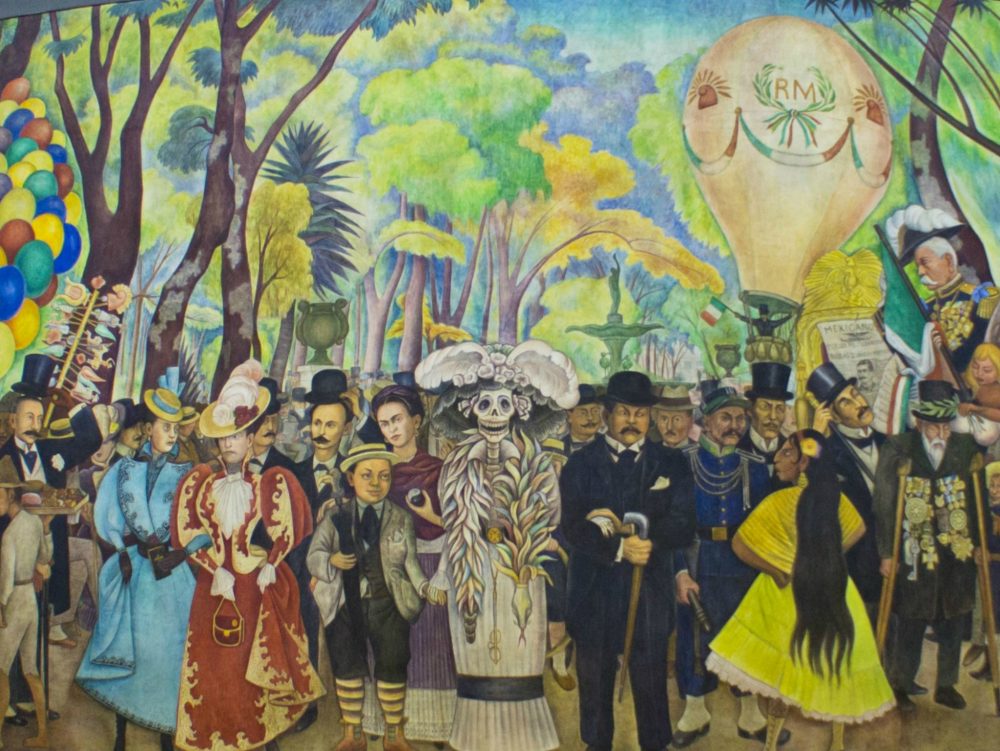Mexican Muralism
Artistic Movements, Periods and styles in 5 Points
We could make this publication thanks to small donations. How is 3 minutos de arte supported?
Mexican Muralism
- This is the name given to the movement that was born in Mexico in 1921 (based on a manifesto written by Siqueiros). One of its elemental characteristics is that it transcended the artistic to also become political and social, thus spreading the ideals of post-revolutionary Mexico. At first, the ideas of the Revolution had the leading role, but over the years, it encompassed all Mexican popular manifestations.
- A couple of years earlier, two of its main referents (Rivera and Siqueiros), had been developing the idea of transforming Mexican art, starting from a national and popular movement.
- As a large part of the murals were no longer carried out indoors (as the tradition had been throughout history), and were carried out on exterior walls, the artists had to look for new technical solutions, and for this reason, they began to use acrylic paint, which is more resistant to different weather conditions.
- The murals of this movement have a “didactic” function: to tell an entire people about their historical legacy, and the history of the country. It is a movement that “redefined” national identity.
- In short, the main themes represented on the walls are the Mexican Revolution, the conquest, industrialization, popular traditions, civil society, capitalism, socialism, politics, the indigenous past, and the main characters of popular culture.
Representative Artists: Siqueiros, Rivera, Orozco, Tamayo, Montenegro, Cantú, González Camarena.
Image: Dream of a Sunday Afternoon in the Alameda Central. Detail (we see Diego Rivera and Frida) (1947). Diego Rivera
Recommended links:
You can also find more material using the search engine.




0 Comments